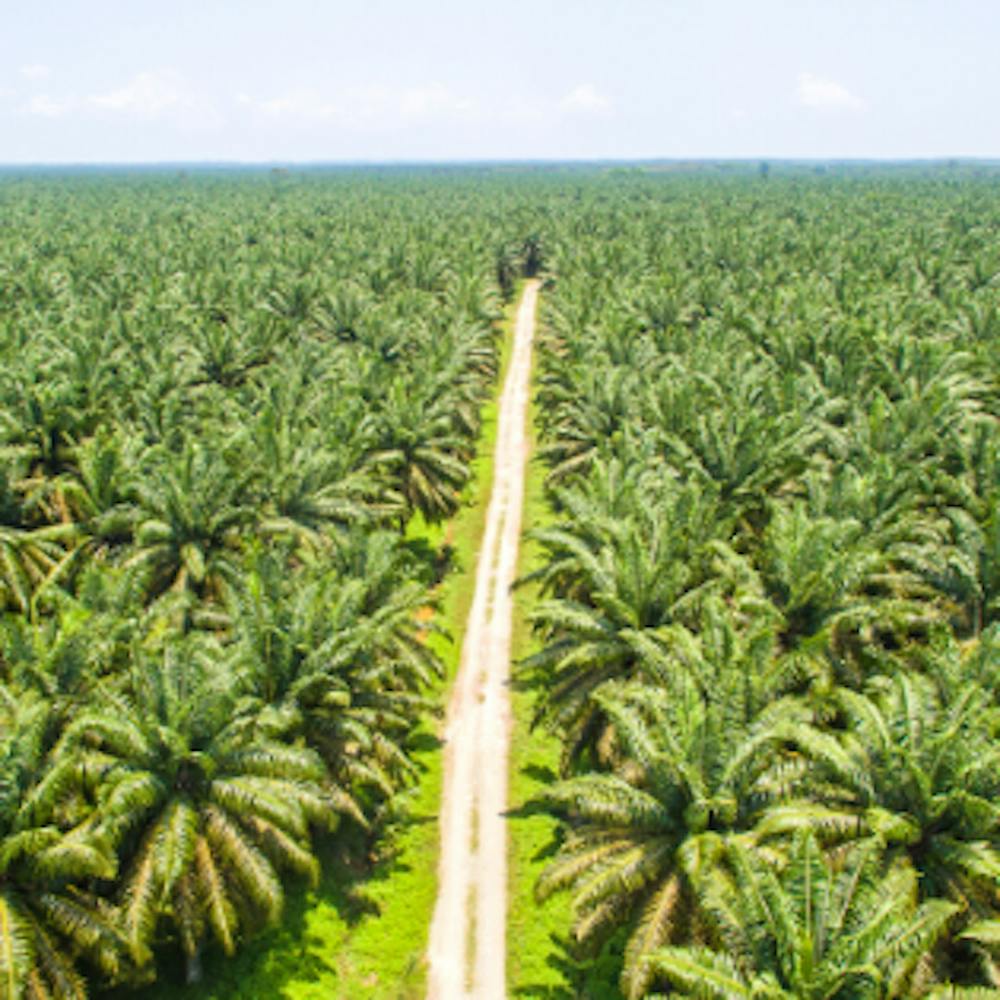By: Makayla Archer
It’s in everything. Palm oil, from its definition, is harmless. On product labels, it can be listed as palm oil, vegetable fat, palm fruit oil, stearic acid, palm kernel, palm kernel oil, vegetable oil, sodium kernelate, glyceryl and more. Palm oil comes from the fruit of palm trees. Palm trees are native to Africa, but can survive in many types of tropical and subtropical climates. It’s versatile. It’s cheap. And it’s in everything. According to the World Wildlife Fund, “it’s in close to 50% of the packaged products we find in supermarkets, everything from pizza, doughnuts and chocolate, to deodorant, shampoo, toothpaste and lipstick. It’s also used in animal feed and as a biofuel in many parts of the world.” What’s the issue? That answer is simple: palm oil itself is the issue. According to the Rainforest Action Network, “palm oil imports to the U.S. have jumped 485% in the last decade.” This insane surge in production has led to massive waves of deforestation. Palm oil is directly responsible for substantial deforestation in over 50 countries including Indonesia, Malaysia, and smaller countries like Costa Rica. This J-Term, I had the opportunity to study abroad in Costa Rica through Miami’s Outdoor Pursuit Center and see the effects of palm oil firsthand. During our experience, my group traveled either by foot or by bus from place to place. The best part about traveling, to me, is the sights you see on the way to your destination. When we traveled along the coast of the Osa Peninsula of Costa Rica, I expected to have an ocean view and see beautiful biodiversity and natural vegetation. But what at first seemed like just a few palm trees scattered along the coast turned into nothing but palm oil plantations.Click here to see a video of Makayla's view.This sight went on for miles, which completely blindsided me. Palm oil is something I started to learn about a few years ago. The issue caught my attention then, and I have stayed informed on the topic ever since. I actively check labels to avoid it in products, seek out news updates and do what I can to educate my friends and family. I never expected to see it right in front of me. I never expected to encounter miles and miles and miles of plantation after plantation. I never expected to feel so helpless in one of the most biodiverse countries in the world. In Costa Rica, the palm oil industry is changing. The current economy benefits heavily from tourism, and worldwide, the country is known as an ecotourism hub. Therefore, ecotourism is working to stifle the value of palm oil, making it a less efficient source of profit. I talked with citizens about the issue during my study abroad trip. Many plantation workers have been able to leave this “sick form of slavery they call industry work”, as Diego, a local stated to me. But it’s not enough. Workers are paid by the “sack” full: they are given sacks that they are expected to fill with palm fruit. They receive roughly 3.00 USD a bag and on average only 15.00 USD daily. Diego described the labor’s toll on his well-being when he said that “Your back is breaking and you leave with basically nothing to show for it.” Although my study abroad trip was focused on becoming a well-rounded outdoor leader, I left Costa Rica with so much more than leadership skills. I was able to cater my experience to learn more about issues that mattered to me. It meant putting myself out there by asking hard-hitting questions, but the insight I gained was well worth the risk. What can I do?- Start reading product labels
- Say no to products that contain palm oil
- Support products that follow the guidelines set by the Roundtable on Sustainable Palm Oil (RSPO)
- Take action online by adding your voice to the WWF scorecard, found here
- Do your own research on the topic and don’t be afraid to ask questions
- Vote for the planet
- Share what you know
Cover photo courtesy of Canva

